.png)
Astronomical Society of Haringey |
.png)
.png)
PRACTICAL OBSERVING
GALLERY
 |
Interesting shot of the Sun, showing several groups of sunspots that are present, January 2024 Taken using a Seestar S50 camera Photo : Dave Starling |
|---|---|
Annular Solar Eclipse, 14 October 2023 Upper left : setting up Photos : Mat Irvine |
|
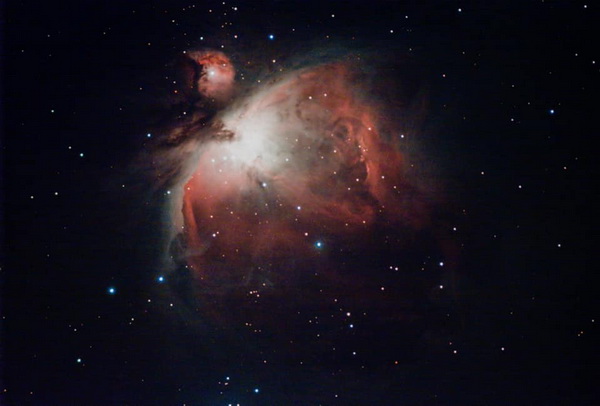 |
 |
 |
Top left - The Orion Nebula Top right - The Andromeda Galaxy Left - The Cygnus Wall Photos : Keith Pritchard
|
Comet NEOWISE July 2020 Photo : Mat Irvine |
|
Moon, Mercury and Venus 24 May 2020 Photo : Mat Irvine |
|
Lunar Eclipse 27th July 2018
As seen from Greece Photo : Jim Webb |
 |
 |
Lunar Eclipse 27th July 2018
Photo : Kyri Voskou |
A 3-day old Moon and a very low down Venus photo : Mat Irvine |
|
BELOW : Wednesday 31st January 2018 saw the Full Moon achieving three things! 1) It was a Supermoon in that it is at perigee, its closest approach to the Earth The Moon appeared about 14% larger, and 30% brighter, but this is only relative, and it's difficult to really spot any differences |
|
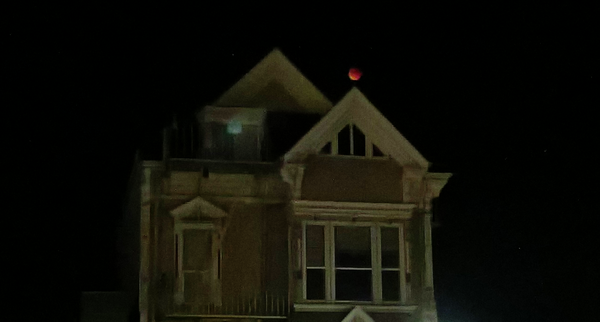 |
LUNAR ECLIPSE same time as the Supermoon, 31st January 2018 photographed from San Francisco, California photo : Jim Webb, via a cell phone camera |
SUPERMOONS : January 2018 right : as of the beginning of the month top left and right : as of the end photos : Mat Irvine |
|
 |
THE MOON photo : Wayne Johnson |
A STRANGE VIEW OF THE SUN photo : Mat Irvine |
|
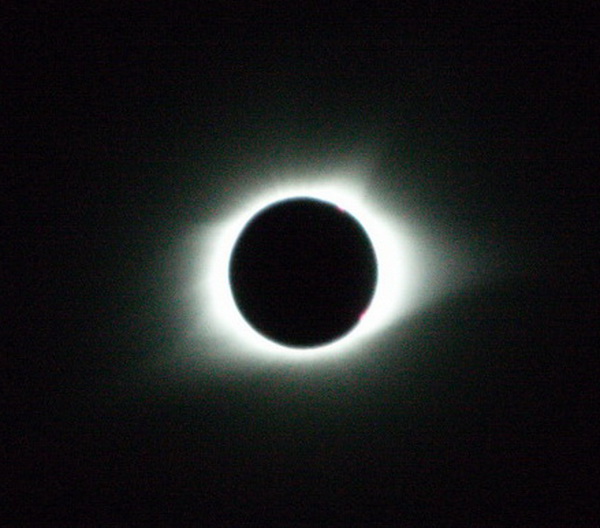 |
|
|
TOTAL SOLAR ECLIPSE
21st August 2017 as shot from the United States Above left from Illinois : Apostolos Filis Above right and left from Nebraska : Mat Irvine For more details |
PLIEADES CLUSTER 3rd February 2017
photo : Apostolos Filis |
|
MOON and VENUS
photo: Mat Irvine |
|
TRANSIT of MERCURY : 9th May 2016 Above left - image taken at 15.07hrs. Mercury is the small dot lower left. A large sunpot group can be seen centre right. photo : Mat Irvine, taken by the projection method (right) Above right, image taken at 13.37hrs (time stamp is UTC), Mercury can just be made out around the photo : Dave Starling |
 |
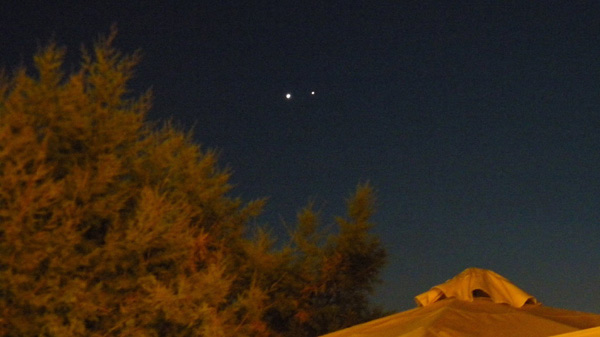 |
Venus (the brighter) and Jupiter as photographed 1st July 2015, one day past their closest approach.
photo : Jim Webb |
Venus, the lower and brighter, and Jupiter at their closest approach 30th June 2015. At this point they are about 20 arc minutes apart, which 1/3 degree, and to give some indication of scale, the full Moon is 1/2 degree in dimameter. photo : Mat Irvine |
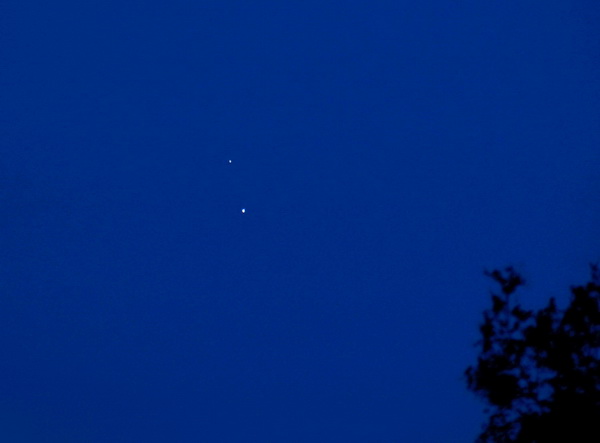 |
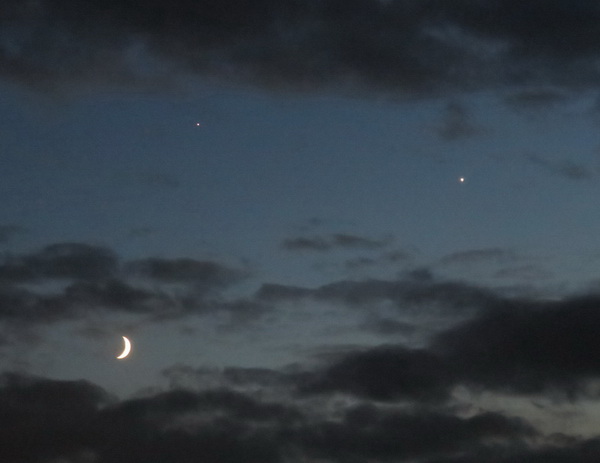 |
Jupiter and Venus, forming a triangle with the crescent Moon on 20th June 2015
photo : Dave Starling |
The Moon photographed using the camera in a cell phone
photo : Jim Webb |
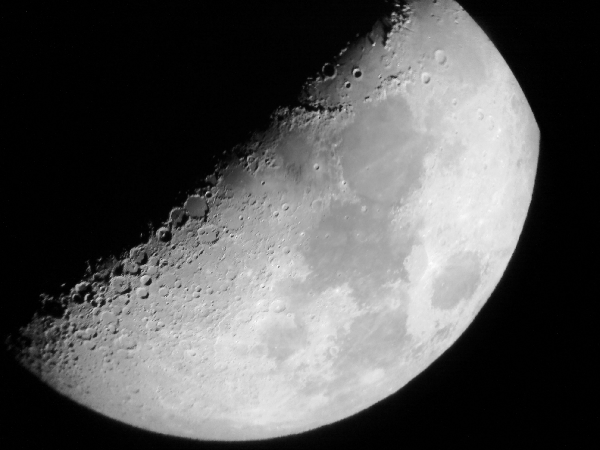 |
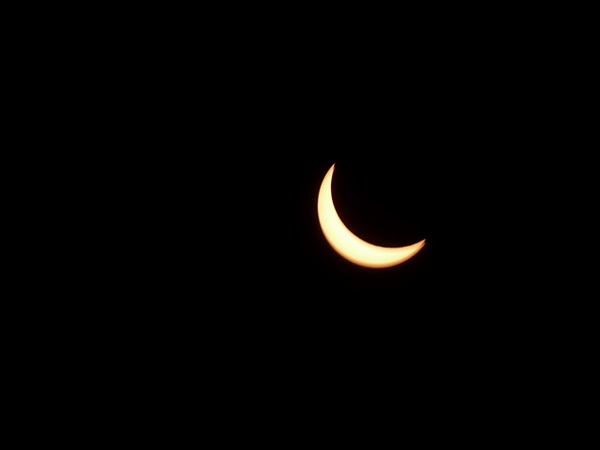 |
Maximium Partial Solar Eclipse as seen from the UK 20th March 2015
photo : Tony Goddard |
Almost midway for the Annular Eclipse of the Sun, May 2012 This was taken in Arizona 18.35 20th May 2012, local time, which was 02.35 21st UTC photo : Mat Irvine For more details see the June 2012 issue of 2002 |
|
Above : the final stages of the 2012 Transit of Venus from the UK, 6th June. 05.35 BST (04.35 UT) Venus is just visible as a small dot at about the 1 o'clock position photo : Mat Irvine For more details see the June 2012 issue of 2002 |
|
Right: How to view the Sun safely - the projection method, here following the progress of the Total Solar Eclipse of 2006, taken from Turkey. A 2in / 50mm refractor used to project the image onto a screen. Below: Totality - the photo on the right shows why this part is called 'The Diamond Ring Effect'! photos : Mat Irvine |
|
 |
COMET HALE BOPP photographed in 1997 photo : Mat Irvine |
|
Any specific queries regarding observing evenings - email: observing@ashastro.co.uk
|
|